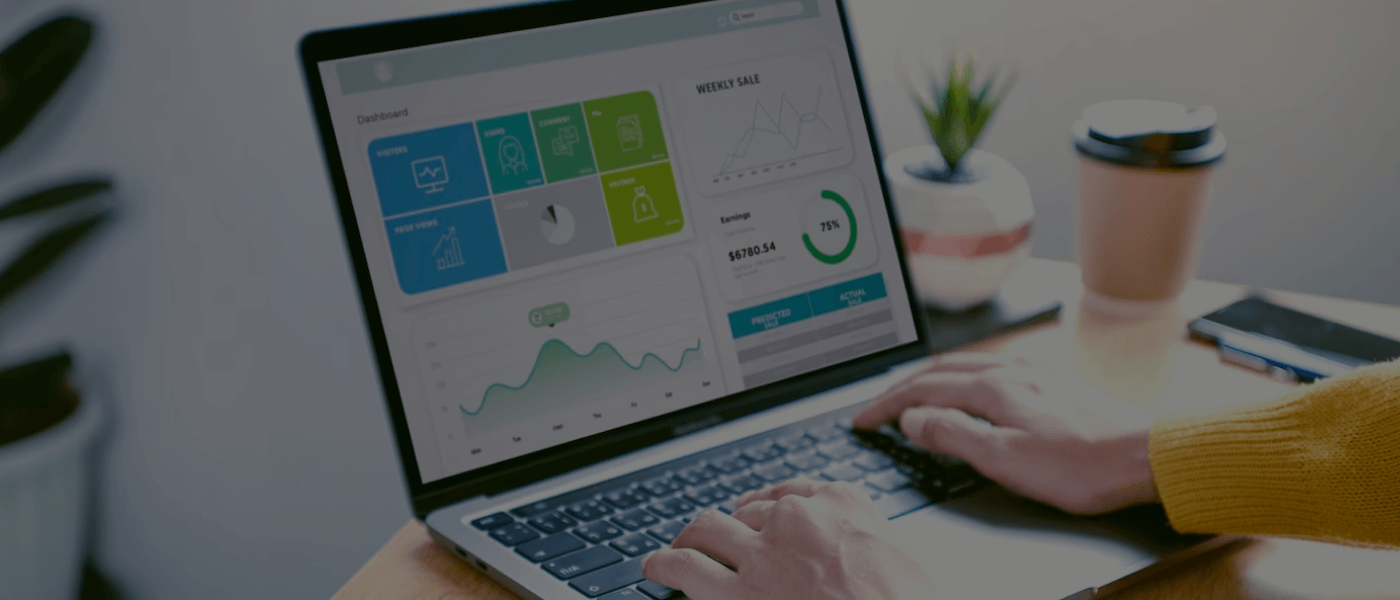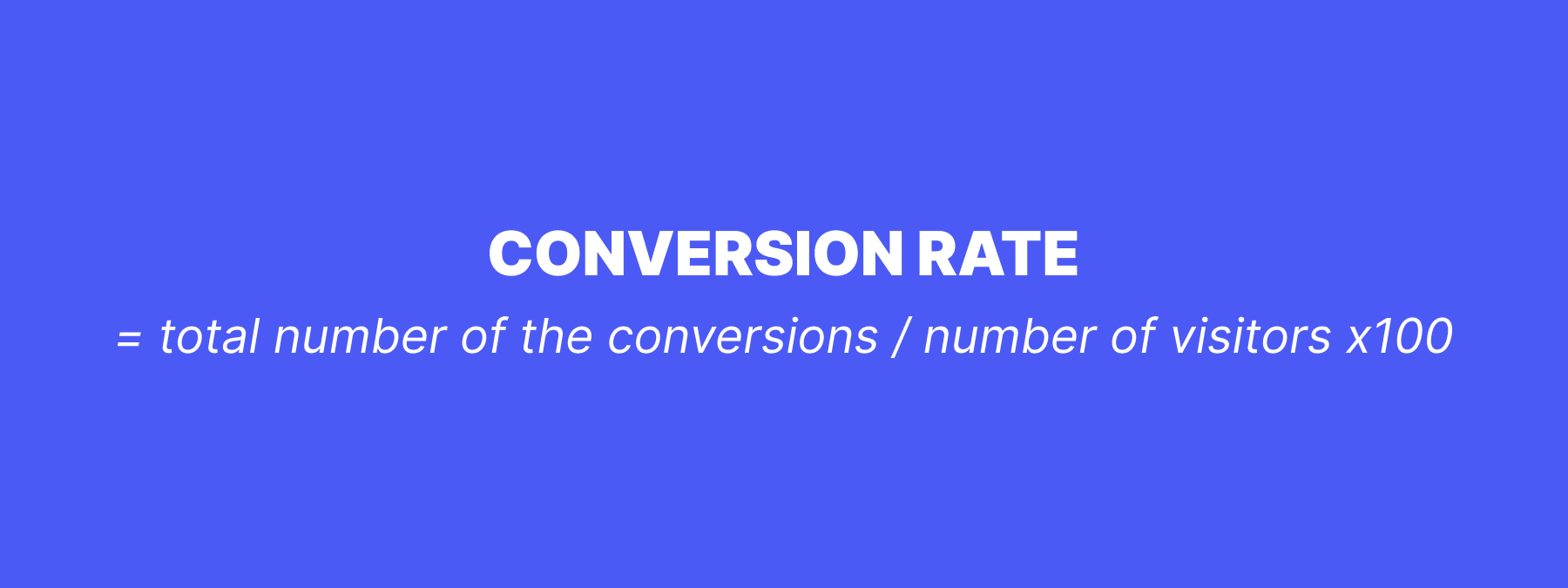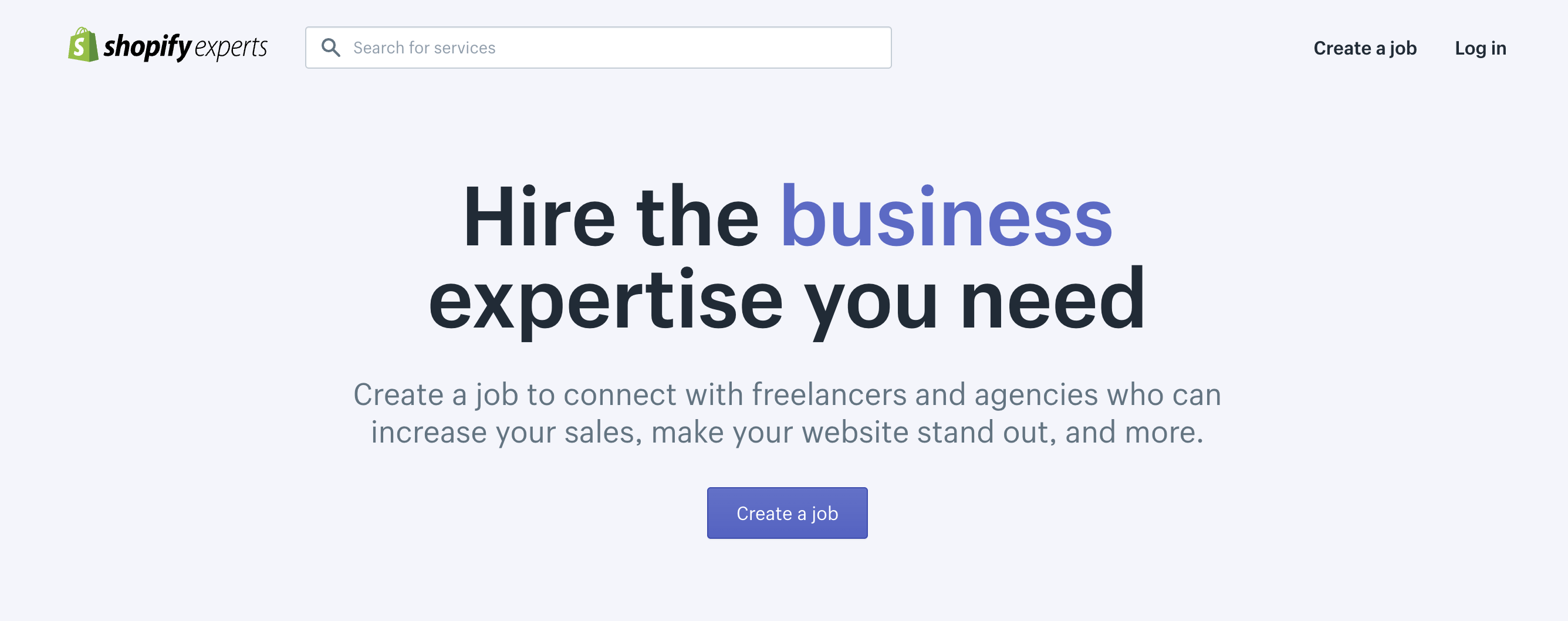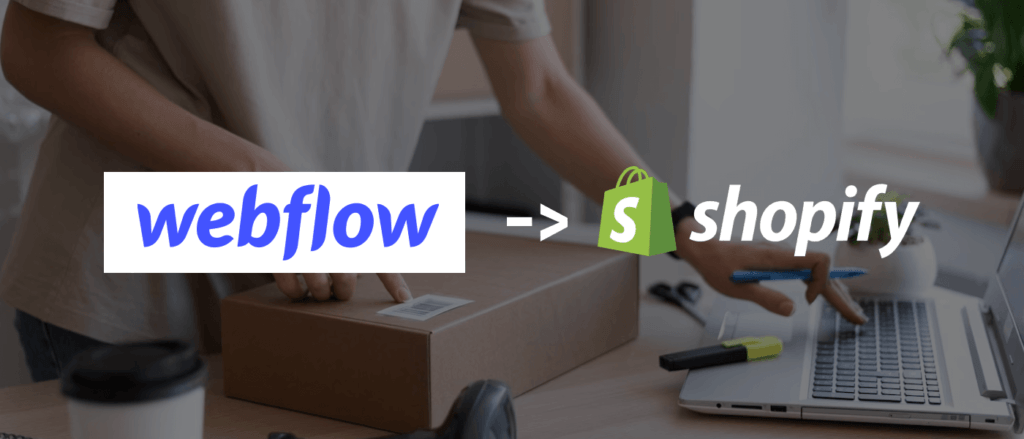Shopify Conversion Rate Optimization. Boost Your E-commerce Success (2023)
 September 04, 2023
September 04, 2023 Conversion Rate Optimization (CRO) is a crucial aspect of running a successful e-commerce business on the Shopify platform. CRO is the process of improving your website's performance to increase the percentage of visitors who take a desired action, such as making a purchase or signing up for a newsletter. By mastering Shopify conversion rate optimization, you can significantly boost your online store's success.
Shopify conversion rate optimization. Why is CRO Important for Shopify Stores?
CRO is essential for Shopify stores because it directly impacts your revenue and profitability. By optimizing your conversion rate, you can maximize the return on investment (ROI) from your marketing efforts. Instead of focusing solely on driving more traffic to your website, CRO allows you to make the most of the traffic you already have. It helps you identify and address any barriers that may be preventing visitors from becoming customers, ultimately increasing your sales and revenue.
- Increased Revenue: CRO focuses on improving the percentage of website visitors who take desired actions, such as making a purchase or signing up for a newsletter. By optimizing your store for conversions, you can increase your sales and revenue without necessarily needing to attract more traffic.
- Improved ROI: Instead of spending more on advertising to drive traffic, CRO allows you to make the most of your existing traffic. This can lead to a better return on investment (ROI) for your marketing efforts.
- Better User Experience: CRO involves making your website more user-friendly and intuitive. When visitors have a positive experience on your site, they are more likely to stay longer, explore more products, and ultimately convert into customers.
- Enhanced Trust and Credibility: A well-optimized Shopify store appears more trustworthy and credible to visitors. When your site looks professional and functions smoothly, it instills confidence in potential customers, making them more likely to complete a purchase.
- Competitive Advantage: In the highly competitive e-commerce landscape, CRO can give you an edge over competitors. If your store provides a better user experience and converts visitors more effectively, you're more likely to win customers over competitors who may have similar products.
- Reduced Cart Abandonment: CRO strategies often target cart abandonment, which is a common issue in e-commerce. By optimizing your checkout process, addressing objections, and offering incentives, you can reduce the number of visitors who abandon their shopping carts before completing a purchase.
- Data-Driven Decision-Making: CRO relies on data and analytics to identify areas for improvement. This data-driven approach allows you to make informed decisions about your website's design, content, and user experience.
- Better Marketing Campaigns: When your website converts effectively, it positively impacts your marketing campaigns. You can allocate your marketing budget more efficiently and achieve a higher return on ad spend (ROAS) by sending traffic to a site that converts well.
- Improved SEO Rankings: Search engines like Google consider user experience factors when determining search rankings. A well-optimized site that provides a good user experience is more likely to rank higher in search results, leading to increased organic traffic.
- Customer Retention: CRO is not just about acquiring new customers but also retaining existing ones. By enhancing the user experience and continually improving your website, you can encourage repeat purchases and build customer loyalty.
- A/B Testing and Iteration: CRO involves conducting A/B tests and experiments to discover what works best for your audience. This iterative process allows you to fine-tune your website over time and adapt to changing customer preferences.
In summary, CRO is essential for Shopify stores because it can significantly impact your bottom line by increasing conversions, improving user experience, and making your business more competitive in the e-commerce market. It's an ongoing process that requires regular monitoring and adjustments to ensure your online store continues to perform at its best.
CRO Statistics for Shopify Stores
The importance of CRO for Shopify stores is backed by compelling statistics. According to a study by Shopify, the average conversion rate for e-commerce stores across industries is around 2.9%. However, top-performing stores achieve conversion rates of 5% or higher. This shows the significant potential for improvement through effective CRO strategies. By implementing the right tactics, you can outperform your competitors and achieve impressive results for your Shopify store.
The Principles of Effective CRO
To master Shopify conversion rate optimization, it's essential to understand the principles that drive successful CRO strategies. The first principle is to have a deep understanding of your target audience. By knowing your customers' needs, preferences, and pain points, you can tailor your website and messaging to resonate with them. The second principle is to continuously test and iterate. CRO is an ongoing process, and you need to experiment with different elements of your website to find what works best. Finally, it's crucial to provide a seamless user experience. Your website should be easy to navigate, load quickly, and offer a frictionless checkout process.
Effective Conversion Rate Optimization (CRO) relies on a set of principles and best practices aimed at improving the percentage of website visitors who take desired actions, such as making a purchase or filling out a contact form. Here are the key principles of effective CRO:
- Data-Driven Decision-Making: CRO starts with data analysis. Use tools like Google Analytics, heatmaps, user session recordings, and A/B testing to gather data about user behavior on your website. This data helps you identify pain points and areas for improvement.
- Clear and Measurable Goals: Define clear, specific, and measurable goals for your CRO efforts. These goals could be increasing sales, sign-ups, downloads, or any other action relevant to your business.
- Customer-Centric Approach: Understand your target audience's needs, preferences, and pain points. Create user personas and tailor your CRO strategies to cater to these personas. The user experience should be at the forefront of your optimization efforts.
- A/B Testing: A/B testing (split testing) is a fundamental CRO technique. Test variations of elements like headlines, images, calls-to-action, and forms to determine which versions perform better in terms of conversions.
- Mobile Optimization: Ensure your website is responsive and mobile-friendly. A significant portion of web traffic comes from mobile devices, and a poor mobile experience can lead to high bounce rates and low conversions.
- Page Speed Optimization: Fast-loading pages are essential for user satisfaction and SEO. Optimize your website's performance by compressing images, using content delivery networks (CDNs), and minimizing unnecessary scripts.
- Compelling and Relevant Content: Content plays a vital role in CRO. Ensure your content is engaging, relevant, and provides value to visitors. Use persuasive copywriting techniques to encourage conversions.
- Effective Call-to-Action (CTA): Your CTAs should be clear, action-oriented, and strategically placed throughout your website. Test different CTA variations to find the most effective ones.
- Simplified Navigation: Make it easy for users to find what they're looking for. Streamline your website's navigation, and use intuitive menus and categorization. Reduce the number of clicks required to reach essential pages.
- Trust and Credibility: Build trust with your audience by prominently displaying trust signals such as customer reviews, security badges, and guarantees. Ensure your website looks professional and free from errors.
- Social Proof: Leverage social proof in the form of testimonials, reviews, and case studies to reassure visitors that others have had positive experiences with your products or services.
- Exit-Intent Popups: Use exit-intent popups to capture leads or offer special discounts to visitors who are about to leave your site. These popups can help recover potential lost conversions.
- Cart Abandonment Recovery: Implement cart abandonment recovery strategies, such as sending email reminders to users who left items in their carts without completing the purchase.
- Personalization: Use personalization techniques to show relevant products or content to individual users based on their browsing and purchase history. This can increase engagement and conversions.
- Continuous Testing and Optimization: CRO is an ongoing process. Continuously test and optimize your website, even after achieving initial improvements. Customer behavior and preferences can change over time.
- Multichannel Optimization: Consider the entire customer journey, including interactions on different channels like social media, email, and paid advertising. Ensure consistency and alignment across all touchpoints.
- Feedback and User Surveys: Collect feedback from users through surveys or feedback forms to understand their pain points and gather insights for improvement.
By adhering to these principles and regularly monitoring and adjusting your CRO efforts based on data-driven insights, you can create a website that not only attracts visitors but also converts them into loyal customers. Effective CRO can significantly impact your business's success and profitability.
Analyzing Your Shopify Store's Conversion Funnel
One of the first steps in mastering Shopify conversion rate optimization is to analyze your store's conversion funnel. The conversion funnel represents the journey that visitors take from landing on your website to completing a desired action. It typically consists of several stages, such as awareness, consideration, and conversion. By analyzing each stage of the funnel, you can identify areas of improvement and optimize the user experience. Use analytics tools like Google Analytics to track the performance of each stage, including the number of visitors, bounce rate, and conversion rate.
Identifying Barriers to Conversion on Your Shopify Store
Once you've analyzed your conversion funnel, the next step is to identify barriers that may be preventing visitors from converting on your Shopify store. Common barriers include unclear navigation, complex checkout processes, lack of trust signals, and slow loading times. Conduct user testing and collect feedback from customers to gain insights into their pain points and frustrations. By addressing these barriers and enhancing the user experience, you can remove obstacles that hinder conversions and improve your overall CRO.
Identifying and addressing barriers to conversion on your Shopify store is essential for improving your website's effectiveness in turning visitors into customers. Here's how you can identify these barriers:
- Analyze Analytics Data: Use tools like Google Analytics to gather data on user behavior, traffic sources, and conversion rates. Look for patterns and anomalies that may indicate barriers to conversion. Pay attention to metrics such as bounce rate, exit rate, and time on page.
- Heatmaps and Session Recordings: Heatmap tools like Hotjar and session recording tools like FullStory can provide visual insights into how users interact with your website. Heatmaps show where users click, move their cursors, and scroll, while session recordings allow you to watch individual user sessions to understand their actions and frustrations.
- Conversion Funnel Analysis: Review your conversion funnel to identify drop-off points. A conversion funnel typically includes stages like landing page, product page, cart, and checkout. Analyze the data to see where users are leaving the funnel and investigate why.
- User Surveys and Feedback: Implement on-site surveys or post-purchase surveys to collect feedback from users. Ask questions about their experience, what prevented them from converting, and what improvements they suggest.
- Usability Testing: Conduct usability testing with real users to observe how they interact with your website. This can reveal usability issues, navigation difficulties, or confusing elements that hinder conversion.
- Competitor Analysis: Study your competitors' websites to see what they are doing differently. Compare their user experience, pricing strategies, and product offerings to identify potential barriers on your site.
- Page Load Speed: Slow-loading pages can deter users from staying on your site or completing transactions. Use tools like Google PageSpeed Insights or GTmetrix to assess and improve page load times.
- Mobile Optimization: Ensure your website is mobile-friendly. Test it on various devices to identify any issues that might be causing poor user experiences on mobile.
- Broken Links and Errors: Regularly check for broken links, 404 errors, and other technical issues that can frustrate users and cause them to leave your site.
- Form and Checkout Optimization: Examine the checkout process and forms on your site. Long, complex forms or a convoluted checkout process can lead to cart abandonment. Simplify and streamline these processes as much as possible.
- Trust and Security Concerns: Look for signs that users may have trust or security concerns. Address these concerns by displaying trust badges, highlighting your return policy, and providing secure payment options.
- Inadequate Product Information: Ensure product descriptions are informative and include high-quality images. Lack of information can deter users from making a purchase.
- Pricing and Shipping Transparency: Be transparent about pricing, shipping costs, and delivery times. Hidden fees or unclear shipping information can be major barriers to conversion.
- Limited Payment Options: Offer a variety of payment options to accommodate different user preferences. Lack of choice can be a barrier if users prefer specific payment methods.
- Ineffective Calls to Action (CTAs): Review your CTAs to make sure they are clear, action-oriented, and strategically placed. A weak or confusing CTA can hinder conversions.
- Content Relevance: Ensure that the content on your website is relevant to the visitor's needs and expectations. Misleading or irrelevant content can lead to frustration and higher bounce rates.
- Geographic Considerations: If you serve an international audience, consider localization and currency options. A lack of localization can deter potential customers from other regions.
Once you've identified potential barriers to conversion, prioritize them based on their impact and feasibility to address. Implement changes and improvements iteratively, and continue monitoring your analytics and user feedback to assess the impact of your efforts. Conversion rate optimization is an ongoing process, and regular evaluation and adjustments are key to improving your Shopify store's performance.
Optimizing Your Shopify Store's Product Pages
Product pages play a crucial role in converting visitors into customers. To optimize your Shopify store's product pages, start by ensuring that your product descriptions are clear, concise, and persuasive. Use high-quality images and videos to showcase your products from different angles. Include customer reviews and ratings to build trust and social proof. Make the "Add to Cart" button prominent and easily accessible. Consider implementing features like product recommendations and related items to encourage cross-selling and upselling.
Streamlining the Checkout Process for Higher Conversion Rates
A complicated and time-consuming checkout process can be a significant barrier to conversion. To streamline your Shopify store's checkout process, make it as simple and intuitive as possible. Minimize the number of steps and form fields required. Offer guest checkout options to avoid forcing visitors to create an account. Clearly display shipping costs and estimated delivery times. Provide multiple payment options to cater to different customer preferences. By making the checkout process seamless and hassle-free, you can significantly increase your conversion rates.
Utilizing Persuasive Copywriting and Compelling Visuals
Effective copywriting and visuals are powerful tools for boosting conversions on your Shopify store. Craft compelling and persuasive product descriptions that highlight the benefits and unique selling points of your products. Use persuasive language and create a sense of urgency to encourage visitors to take action. Incorporate visually appealing graphics, videos, and infographics to engage and captivate your audience. By combining persuasive copywriting with compelling visuals, you can create a compelling shopping experience that drives conversions.
Implementing Trust Signals and Social Proof on Your Shopify Store
Building trust is crucial for increasing conversions on your Shopify store. Implement trust signals and social proof throughout your website to instill confidence in your visitors. Display security badges, SSL certificates, and payment logos to reassure customers that their personal information is safe. Showcase customer testimonials, reviews, and ratings to demonstrate the quality and reliability of your products. Highlight any industry awards or certifications you have received. By incorporating trust signals and social proof, you can alleviate any doubts or concerns and encourage visitors to make a purchase.
Testing and Measuring the Effectiveness of Your CRO Efforts
Continuous testing and measuring are essential components of successful Shopify conversion rate optimization. A/B testing allows you to compare different variations of your website or landing pages to determine which performs better. Test different elements such as headlines, call-to-action buttons, colors, and layouts. Use heat maps and session recordings to gain insights into how visitors navigate your website. Monitor key metrics such as conversion rate, average order value, and bounce rate to gauge the effectiveness of your CRO efforts. Make data-driven decisions and iterate based on the results you obtain.
Hiring a CRO Agency or Consultant for Expert Guidance
If you're new to CRO or don't have the resources to dedicate to it, consider hiring a CRO agency or consultant. These experts specialize in optimizing conversion rates and can provide valuable insights and guidance tailored to your Shopify store. They have the knowledge and experience to identify areas of improvement and implement effective strategies. A CRO agency or consultant can save you time and effort while delivering measurable results for your e-commerce business.
CRO Tools and Resources for Shopify Store Owners
There are several CRO tools and resources available to Shopify store owners that can support your optimization efforts. Google Optimize is a free tool that allows you to conduct A/B tests and personalize your website based on user behavior. Hotjar provides heat maps, session recordings, and feedback polls to gain insights into user behavior. Optimizely is another popular tool for A/B testing and experimentation. Additionally, Shopify offers various apps and plugins specifically designed for CRO, such as Justuno and OptinMonster. Explore these tools and resources to enhance your CRO strategies.
Case Studies of Successful CRO Strategies for Shopify Stores
To inspire and learn from others, it can be helpful to examine case studies of successful CRO strategies for Shopify stores. Case studies provide real-world examples of how businesses have implemented CRO tactics and achieved significant improvements in their conversion rates. Look for case studies that relate to your industry or target audience to gain insights and ideas that you can apply to your own Shopify store. Analyze the strategies and tactics used, and adapt them to suit your unique business needs and goals.
Conclusion
Mastering Shopify conversion rate optimization is a powerful way to boost your e-commerce success. By understanding the principles of effective CRO, analyzing your conversion funnel, and identifying barriers to conversion, you can optimize your Shopify store for higher conversion rates. Utilize persuasive copywriting, compelling visuals, trust signals, and social proof to build customer trust and encourage action. Continuously test, measure, and iterate based on data-driven insights. Consider hiring a CRO agency or consultant for expert guidance, and leverage CRO tools and resources to support your optimization efforts. By implementing these strategies, you can unlock the full potential of your Shopify store and achieve exceptional results in your e-commerce business.
Contact Mgroup for help with CRO Shopify websites.











